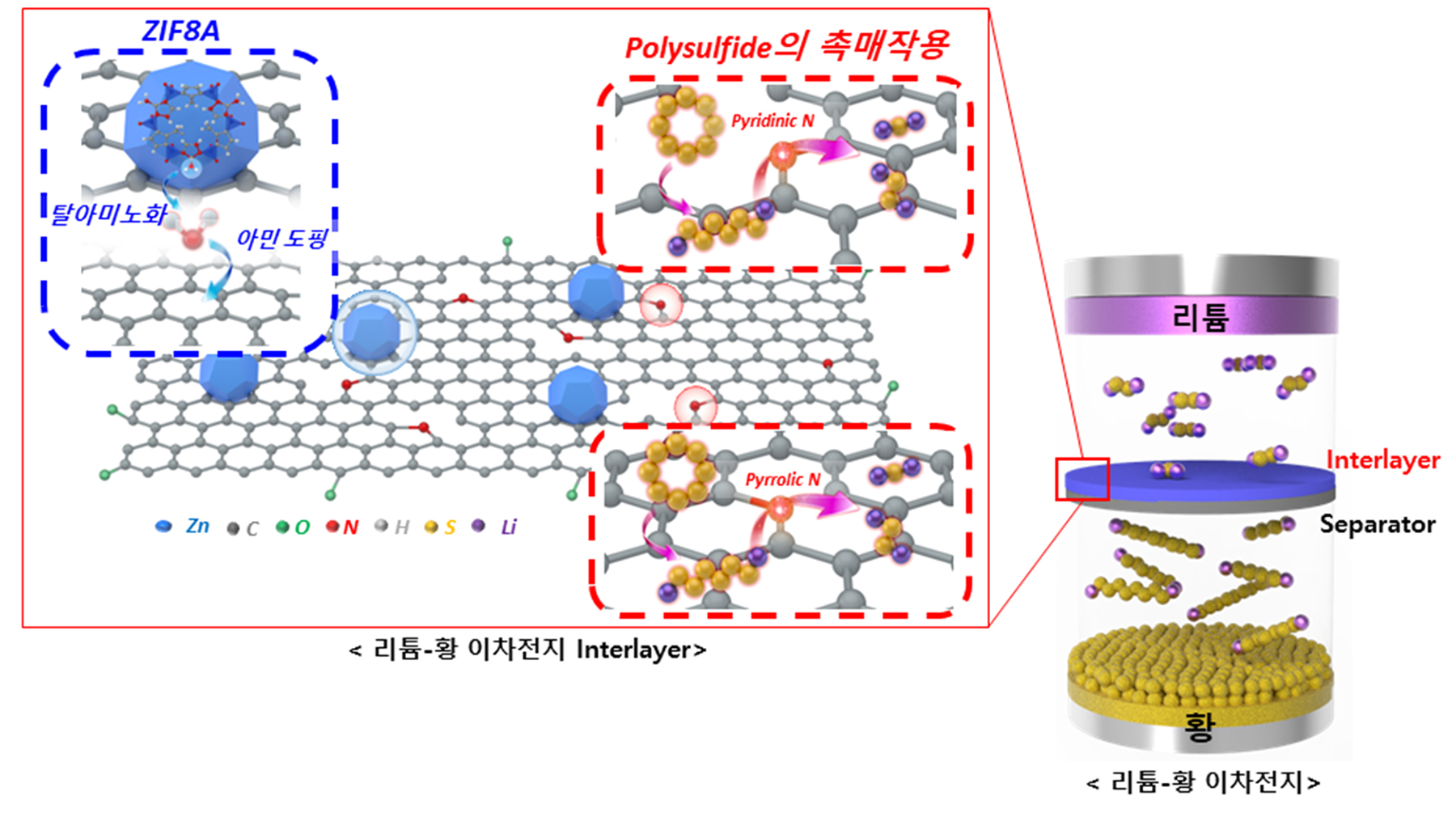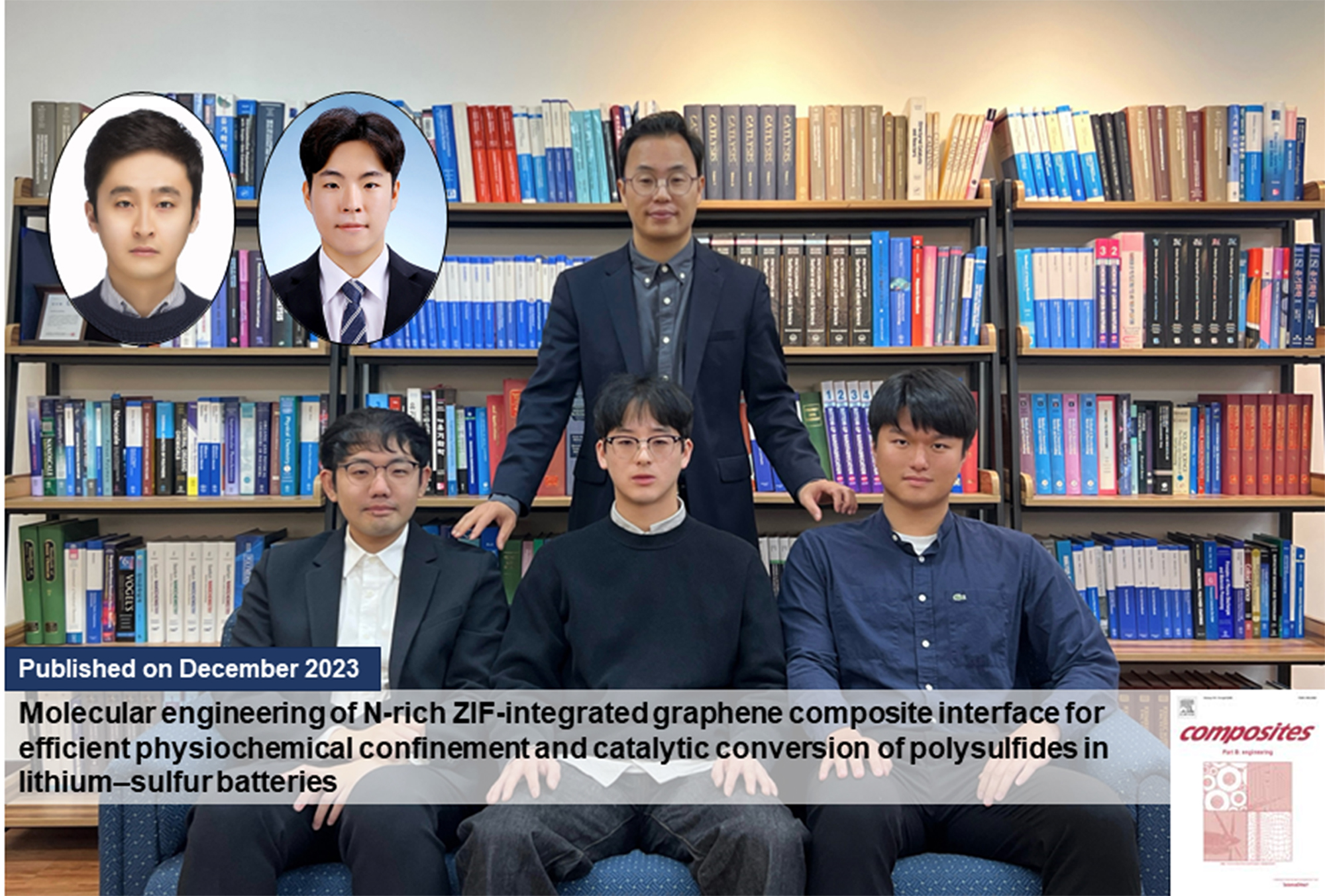연구/산학
PKNU Research 1000
| Cho Kie-Yong | Proposed a separator for next-generation Li-S secondary batteries | |||
| 작성자 | 대외협력과 | 작성일 | 2024-06-14 |
| 조회수 | 24259 | ||
| Cho Kie-Yong | Proposed a separator for next-generation Li-S secondary batteries | |||||
 |
대외협력과 |  |
2024-06-14 |  |
24259 |
Prof. Cho Kie-Yong's team at PKNU proposed a separator for next-generation Li-S secondary batteries
- paper in the international academic journal <Composites Part B: Engineering>

The research team led by professor Cho Kie-Yong at Pukyong National University (industrial chemistry) announced that they had developed a new separator for lithium-sulfur batteries, which are considered the next-generation secondary batteries.
A joint research team led by professor Cho Kie-Yong at Pukyong National University and professor Lee Jin-Hong (department of organic material science and engineering) at Pusan national university proposed a manufacturing method based on metal-organic framework (MOF) materials to overcome the shuttle effect that causes degradation, a major obstacle to commercialization of Li-S batteries.
The research team announced research results that improved the charging and discharging efficiency of Li-S batteries and the stability of electrodes by manufacturing and applying a separator based on a porous MOF material with a large surface area.
Li-S batteries are attracting great attention as next-generation secondary batteries because they can achieve high electric capacity, but they have the problem of permanently reducing electrode capacity and shortening battery life by generating lithium polysulfate chains (Li2Sx) due to the shuttle effect during charging and discharging.
The research team manufactured a separator using 'NZG', a composite of functionalized multifunctional MOF material (ZIF-8A) using zeolitic imidazolate framework-8 (ZIF-8), one of the MOF materials, and graphene oxide, to overcome the shuttle effect and maintain high electrode capacity.
As a result, the research team created a Li-S battery that maintains high electrode capacity even at fast charging and discharging rates through an immediate oxidation-reduction reaction through catalytic action in the NZG complex, which has an excessive number of amines on a large surface area of polysulfide generated during charging and discharging.
The research was conducted with support from the National research foundation of Korea for young researcher program and the Ministry of trade, industry and energy, and was recently published in <Composites partB: engineering> (IF=13.1, JCR=0.6%), an international academic journal in materials and energy.
Kim Se-Hoon, a master's student and the first author of this research paper, said, "I expect that the commercialization of Li-S batteries, one of the next-generation battery types, can be accelerated by improving the problems of existing separators by developing multi-functional MOF materials and coating technology for Li-S batteries using composite technology." <Pukyong Today>

△ The research team. Prof. Cho Kie-Yong at Pukyong National University (center), Kwon Young-Je, Kim Se-Hoon, Choi Kyeong-Min (from left below), prof. Lee Jin-Hong from Pusan national university (top left) and Choi Seong-Wook.